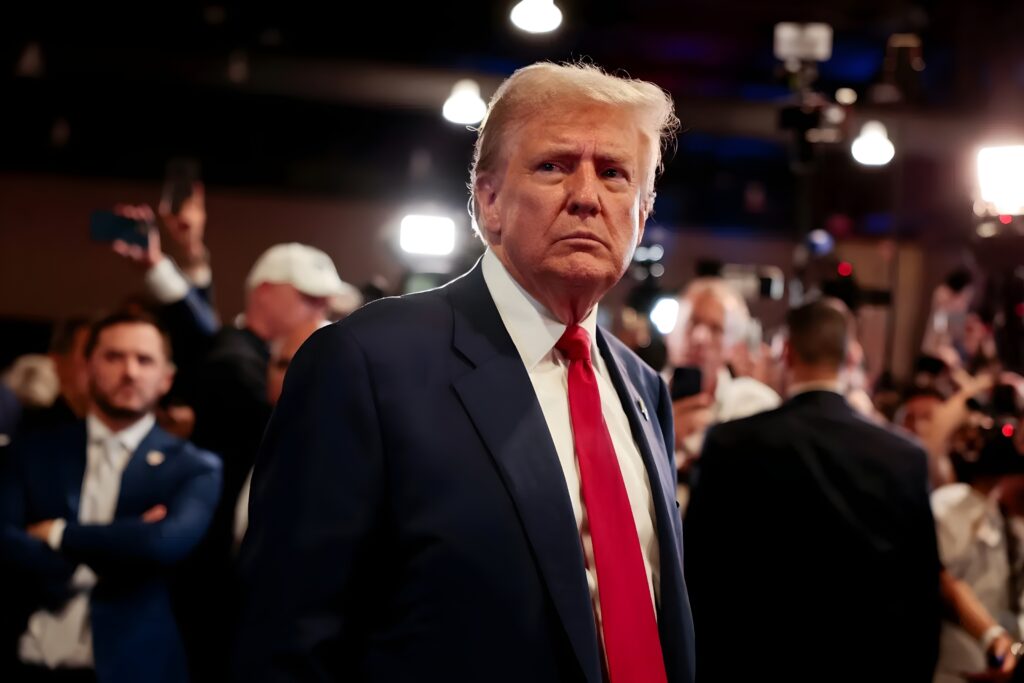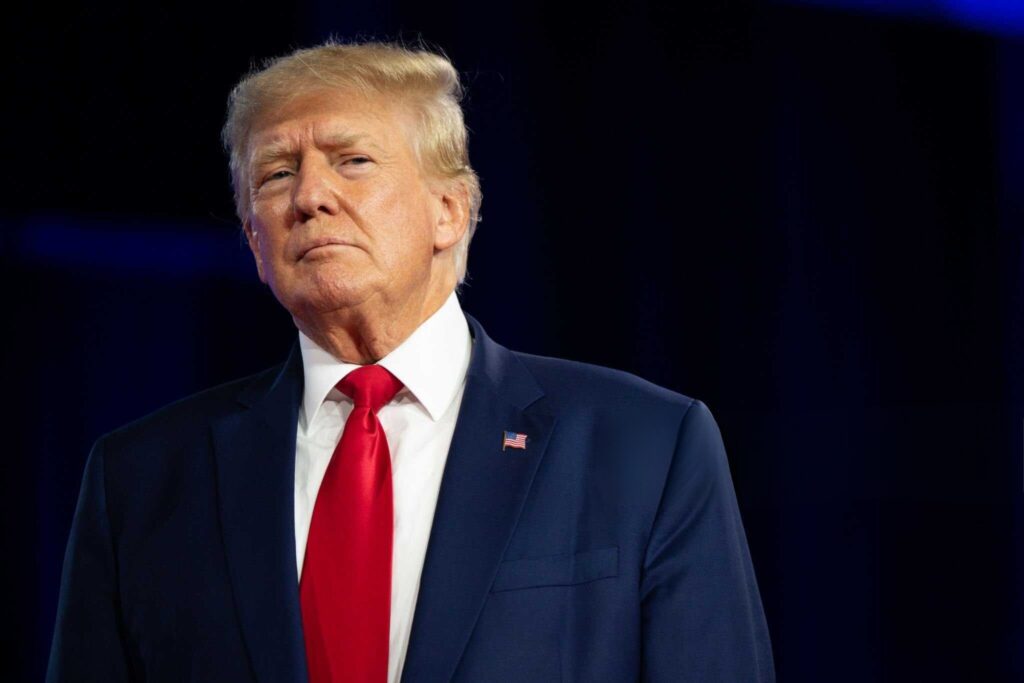The nomination of Donald Trump occasioned many premature obituaries of the Republican Party and the conservative movement. His election led to more predictions of imminent realignment around a new populist agenda.
But the first year of Trump’s presidency in Congress has brought Republican orthodoxy: major tax cuts and another failed push to repeal Obamacare. Trump also appointed a highly conservative cabinet and his administration is dutifully pursuing across-the-board deregulation. He has appointed strongly conservative judges and they are shifting the courts rightward. Anti-Trump Republicans, while remaining justifiably concerned with the decay of democratic norms, are now noticing that Trump has pursued traditional conservative policy.
As to public opinion, Republicans are now facing a larger than normal thermostatic backlash in response to the most conservative administration in memory as well as Trump’s personal unpopularity. These same factors are making Democrats more energized. Republicans’ special election performance reflects this public shift, as do their dimming 2018 electoral prospects.
Trump’s first year thus accelerated the normal partisan pendulum and the nation’s polarizing trends without fundamentally transforming or undermining the Republican Party. Republicans pursued the same fiscal and regulatory policies, the same social issue agenda, and roughly the same international agenda that they would have pursued with another Republican president. This represents a rightward move because they have historically paired conservative policy with at least a few liberal initiatives, such as in education and healthcare under George W. Bush.
Republicans in 2017 also displayed the same internal ideological conflicts that have long plagued the party. But like followers of the Religious Right and the Tea Party before them, Trump aficionados have melded into the broader Republican Right. In primary elections, Republicans are returning to the 2010 and 2012 pattern of right-wing challengers that can undermine general election prospects (largely avoided in 2014 and 2016). But in Congress, Paul Ryan has been better than John Boehner at keeping his caucus together and Senate Republicans have successfully united around rules to work around the filibuster.
The party is facing its traditional challenges, not a new existential crisis. Before the election, I predicted (with my co-author David Hopkins) that a Trump victory would not change the party. It would leave most positions “in the hands of orthodox conservative politicians” with the party facing its traditional predicament: “how to reconcile ambitious campaign promises with the realities of governing without alienating conservative ideologues.” Six months into his presidency, we noted that Trump was still pursuing orthodox conservatism, despite constant claims that a pivot toward Democratic positions was coming.
What will 2018 bring? Trump may depart further from Republicans on international trade or double-down on Republican militarism with North Korea. But Bush also imposed protectionist tariffs (on steel) and pursued an unpopular war. The necessity of negotiating with Democrats on spending (and a reduced Senate majority) will reduce flexibility in Congress. Election-year considerations will pressure Republicans to avoid rash policy change and postpone unpopular actions.
Could a misjudgment by President Trump (say, on North Korea) be so calamitous that it shifts the course of American history and forever damages the Republican Party? Anything is possible, especially with this president. The Civil War and the Great Depression did change our party system, but events on that scale are obviously few and far between. And Democrats and Republicans are now more entrenched in the public mind, so it would take a mighty shock indeed to dislodge GOP voters from their current loyalties. A big historic turning point could materialize unexpectedly, but experts organized to track democratic backsliding under Trump are finding little evidence so far.
Republicans do face big electoral challenges this year, but they have a long way to fall. The party has tight majorities in the House and Senate, but has not held significantly larger majorities since the 1920s. Its control of state governments is also near an all-time high. The party maintains structural and geographic advantages across elections, and in 2018 Republicans will be fighting on especially fertile soil. Republican losses among white professionals and racial minorities are also long-term trends, as is their tendency to be offset by relative gains among the white working class.
Trump could face more scandal this year, especially from Robert Mueller’s investigation. But Republicans’ rallying behavior is again hardly unprecedented. They also rallied around Nixon, with similar arguments resonating: the Democrats were trying to overturn the election and the media was out to get him. Nixon also maintained Republican public support in the early days of Watergate; it faded as Republican leaders abandoned him (though some, including Reagan, continued to defend him). The party recovered: after losing the 1974 and 1976 elections, Republicans re-emerged as a more ideologically conservative party and started their steady drift rightward in 1978. The 1980s brought triumph. Watergate may have even helped conservatives because remaining party moderates lost and distrust in government rose.
Republicans can recover from in-party challenges to their president or an unpopular presidency. After losing both a president and vice president to scandal under Nixon, incumbent Gerald Ford barely survived a challenge from Ronald Reagan—who won the presidency only four years later. In 1992, President George H. W. Bush faced both a primary challenge from Pat Buchanan and an independent challenge from Ross Perot (which also drew Republicans). But Republicans regrouped to take back control of Congress two years later and elect Bush’s son six years after that. George W. Bush’s popularity also dove while in office, culminating in an unpopular war, a botched hurricane response, and the largest recession in decades. Yet Republicans again had to wait out only one presidency before returning to power. A few dissenting senators under Trump (especially complaints from those entering retirement) is hardly a sign of an imminent breakup or division that cannot be survived.
Parties can suffer in their levels of public support due to presidential performance, but the long-term effects tend to be modest. Republican identification did decline from both Watergate and the 2008 recession, but some identifiers later returned to the fold. Trump’s low popularity has lost Republicans about five percentage points of party identifiers this year, but many still lean toward the party and are likely to return to it.
If and when Democrats regain control of government, they are (like the Republicans) prone to overshooting on policy. When their lawmaking expands the role of government on partisan votes, it also leads to electoral backlash—recreating a cycle of close competition. Our increasingly nationalized elections closely pair the results of state and congressional elections based on feelings toward the party in the presidency. As Democrats lost under a Democratic president, Republicans will lose under Trump—and the pattern will likely be replayed again under the next Democratic president.
It is appropriate to criticize Trump for the huge disconnect between his campaign promises and his policies in government, but that does not mean we lack more modest Republican historical precedents. Republicans traditionally run more symbolic campaigns than Democrats, who tend to provide more policy details. They have increasingly relied on ideological media and amplifying resentment in recent elections, a trend Trump accelerated. But from the John Birch Society to Southerners to the Religious Right to the Tea Party, Republicans have long incorporated right-wing populist constituencies into their voting base with only modest changes in their ideological and policy trajectory.
Trump’s move toward a nativist issue focus is not the clear departure often assumed. It matches long-term trends in Republican voting in Congress on race and immigration. Bush’s immigration positions, not Trump’s, were out-of-step with the party’s shifting stances. The move brings Republicans toward alignment with global left-right party divisions on national identity, without changing its status as the world’s most consistently conservative party on other dimensions. In both public opinion and policy, the Republican move responds to a sharp leftward move by Democrats on immigration.
Trump also drew on a long history of Republican strategy in stoking fear of crime, immigration, and racial change in response to cultural liberalization, taking slogans directly from Richard Nixon and Ronald Reagan. The scorched-earth patriotism and culture-war mentality of the 2016 campaign followed the 2004 campaign’s reigniting of Vietnam and gay rights conflicts and the 2008 controversies over Jeremiah Wright and Bill Ayers. The 2012 election, fought mostly on economic issues, turned out to be the exception.
Despite the current liberalizing trends in public opinion (responding to conservative policy change and an unloved Republican president), Republicans maintain a longstanding basis of public support. Americans are more conservative in self-identification and ideological predispositions, despite their more liberal positions on specific policy issues. This has long included not only opposition to big government in the abstract, but also concerns over any acceleration of social and cultural change. Americans favor the Democratic Party to stand up for disadvantaged groups and propose specific policies to solve new social problems, but favor the Republican Party to speak up for shared traditional American values and to ensure that government stays within its proper role in society. Both Americans’ strong party loyalties and their internally divided opinions make a full-scale Republican collapse unlikely.
Even though the public images of the presidential candidates were quite different in 2016 (compared to 2012), the images of the political parties as a whole were remarkably stable. The public’s positive and negative images of Trump were candidate-specific. The public still likes Republicans’ conservatism, view of government, and values; the public still dislikes their support for the rich over the disadvantaged. Nothing they are doing in government is likely to change those views.
Republicans disgusted by Trump naturally want to see him as a complete aberration. Democrats hungry for payback likewise convince themselves that a final liberal victory might be coming. But history suggests that is wishful thinking. As we relearn during each new administration, the backlash may take different forms—but it flows both ways.
—
Matt Grossmann is Senior Fellow at the Niskanen Center, Director of the Institute for Public Policy and Social Research and Associate Professor of Political Science at Michigan State University, and author (with David Hopkins) of Asymmetric Politics: Ideological Republicans and Group Interest Democrats.





